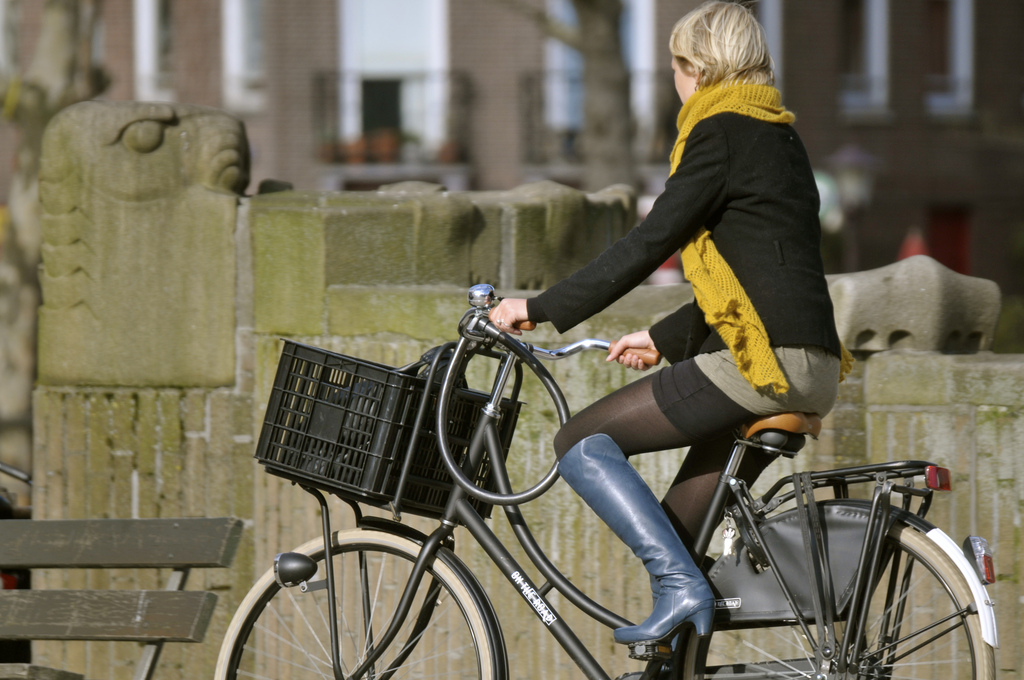
Bernhard Ensink, ECF Secretary General, speaks at high-level EU transport ministers meeting
Bernhard Ensink, ECF Secretary General, spoke at a Hi-level transport ministers meeting In Malta on Wednesday 29th March, here’s the press release. It followed a road safety conference the day before and it was an eventful couple of days. The road safety conference the day before the ministers meeting was to bring together opinions and views from the road safety community on how to move forward and improve road safety. Cycling and pedestrian advocates mixed with victims associations, mixed with infrastructure experts and vehicle manufacturers with road safety organisations. All in all a very eclectic bag.
The results of discussion from that conference went towards five sets of documents to be added as an annex to the transport ministers “Valletta Declaration on Road Safety”. Those five topics included, infrastructure; new vehicle technology, road safety strategies, enforcement and “vulnerable road users” (VRU, Defined as pedestrians, cyclists, and motorcyclists). ECF’s Bernhard Ensink was tasked with compiling the VRU road safety priorities (The other topics covered by covered by EURORAP, ACEM, ETSC, and TISPOL respectively).
These documents will be annexed to the Declaration which had been prepared by member states. We will make our “VRU” document available to you when it is finally public as it is a very good little document with a list of many of the basic recommendations for safer cycling and walking at EU and national level.
The actual Declaration itself is also actually quite a good document considering that every single EU member state had to ‘ok’ it and there are some useful “Declarations” to action. Speed being brought under control in urban areas with transport ministers undertaking to;
“Engage with relevant stakeholders, as part of urban mobility planning, on the possibility of expanding and integrating reduced speed limits, such as 30km/h, into high-risk areas, in particular areas where people work, cycle and play”
You can see where the negotiations between countries has been in the text but if you are engaging in speed reduction then you have a declaration from your transport minister that they should (could?) be working with local authorities (and you) on speed reduction. The Declaration then has some useful language you can wave in front of your politicians to use as a tool to move them to some action.
Likewise transport ministers have also declared that they will undertake to;
“Take cycling and walking into account in mobility plans, safety policies and measures and, where feasible, consider the inclusion of dedicated infrastructure”
Now this is not a Europe-wide change of heart and that cycling, walking and public transport will be prioritised EU-wide in all countries, but it does ratchet up the pressure a little. If there are mobility plans and safety policies that do not include active modes you can ask why they signed this declaration.
Ministers also declared that the European Commission has to continue working on new vehicle technologies through the General Safety Regulations, that is a continuing lobby item for ECF here in Brussels. We want to get all new vehicles fitted with Intelligent Speed Assistance, Autonomous Emergency Braking, and for HGV/trucks to be fitted with active safety systems and their cabs to have good direct vision around then cabs. You can read more about this work here in our Position Paper of "General Safety and Pedestrian Protection Regulations"
It is timely since also during the conference/meeting the Commission released the new road fatality figures for the current 28 members. And there has been a 2% decrease between 2015 and 2016. 26,100 people died on European roads in 2015 and 25,500 in 2016. So 600 lives saved; but before we feel too pleased with ourselves there was a 1% increase the previous year and the previous year was pretty static as well. This means that, according to European Transport Safety Council, we will need around an 11.5% drop every year to reach the Commission goal of halving fatalities by 2020 from 2010.
For me the next safety revolution has to come from the vehicle itself. Vehicle safety technologies have gone into warp drive recently, what manufacturers are able to do with their vehicles is truly incredible. Technology to limit the car to the speed of the road, technology that automatically stops before a crash can occur. This is genuinely revolutionary stuff with a clear path leading to full automation. The European Commission will probably be looking to another set of road safety fatality targets between 2020-2030 (hopefully serious injuries as well as fatality targets, another call from ministers in the Valletta Declaration). Using the vehicle itself to take over the fallibility of the driver can be that next jump towards the ever elusive “Vision Zero”.
The Commission proposal on the new safety regulations has been delayed a few times with a likely proposal due out early 2018, and another impact assessment and public consultation this year (article on this here). The European Parliament will also produce an Own Initiative report on the General Safety Regulation soon which could be a dry run for their position on the Commission’s proposal during the legislative procedure.
We will be pushing all the relevant bodies to focus on lifesaving technologies for cycling and walking, let’s hope that the Commission follow the transport ministers appeal in the declaration to “enhance the protection of road users, and in particular vulnerable road users, by ensuring the deployment of new safety features for vehicles, for instance through accelerating the review of type-approval rules in the General Safety Regulation”
Contact the author
Recent news!
Upcoming events
Contact Us
Avenue des Arts, 7-8
Postal address: Rue de la Charité, 22
1210 Brussels, Belgium









